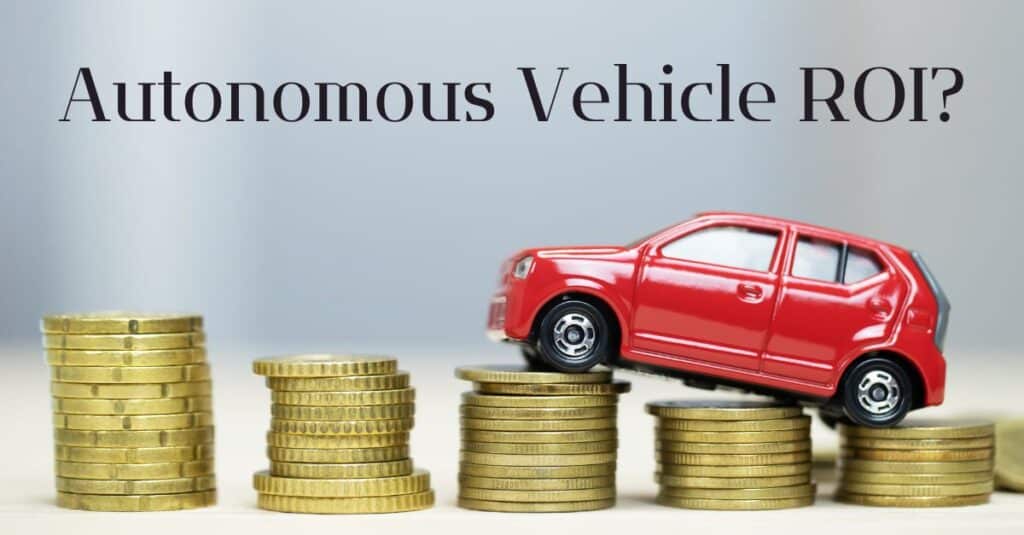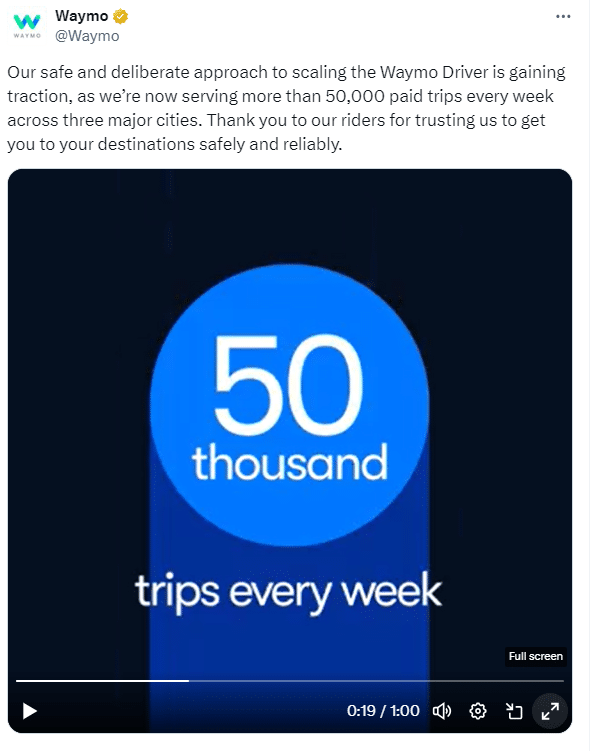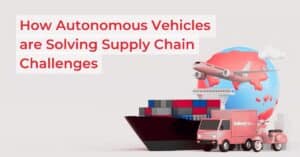The initial hype surrounding the self-driving car industry has matured significantly since its inception. While the vision of autonomous vehicles (AVs) seamlessly navigating city streets remains captivating, the path to widespread adoption and profitability has become more nuanced. This article revisits the diverse use cases for AVs, exploring their progress on public roads and the burgeoning world of geofenced and off-road applications.
Public Roads: A Cautious Embrace
Robotaxis: A Glimpse into the Future, But Not the Present
Robotaxis, the poster child of the autonomous revolution, have captured the public imagination as well as its fears.
Waymo recently announced it serves more than 50,000 paid trips every week.
GM’s Cruise hit the 5 million driverless miles mark before halting operations to regroup after a severe safety incident in October 2023. It is cautiously moving forward under new leadership, starting with manual mapping rides in Phoenix.
In China, Baidu’s vehicles have traveled over 5 million rides. It operates commercial services in Wuhan, Chongqing, and Shenzhen, and pilots in Beijing and Changsha. Baidu’s Apollo Go is considered the world’s largest autonomous ride-hailing service provider, and the company plans to put an additional 200 fully driverless robotaxis into operation this year.
Pony.ai operates commercial and pilot programs in China’s largest cities of Beijing, Shanghai, Guangzhou, and Shenzhen, while AutoX operates a fleet of over 1,000 fully driverless robotaxis across cities like Shenzhen, Guangzhou, Beijing, and Shanghai.

While robotaxis attract public attention and progress has been impressive, their profitability remains questionable. The high cost of sensor technology, software development, and mapping necessitates a substantial ridership base to achieve financial viability.
Here are some indications of this investment according to Crunchbase:
- Waymo: $5.5 billion.
- Cruise: $15.1 billion, roughly half of that from GM. While management expects it to generate $50 billion a year in annual revenue by 2030, according to some analysts, it will require an additional $10 billion of investments before it becomes profitable.
- Motional: $1 billion. Half of that is a recent cash injection and investor buyout by parent company Hyundai accompanied by a workforce reduction designed to cut costs.
- Pony.ai: $1.3 billion.
Finally, as driven miles accumulate, robotaxis’ ability to operate safely and smoothly in complex urban environments is constantly being questioned.
Public Transportation: Filling the Gap
Autonomous buses and shuttles are emerging as a solution to pressing public transport challenges. Examples like EasyMile’s EZ10 driverless shuttles operate in various locations, including the US, Belgium, France, Germany, China, and Japan. The autonomous shuttles operate without an onboard safety driver on both public roads with mixed traffic and in enclosed areas, providing first- and last-mile connectivity and complementing existing public transport networks. For example, the operational fleet in Monheim am Rhein was the first fleet of autonomous shuttles on public roads in Germany. It connects the city center with the nearby old town.
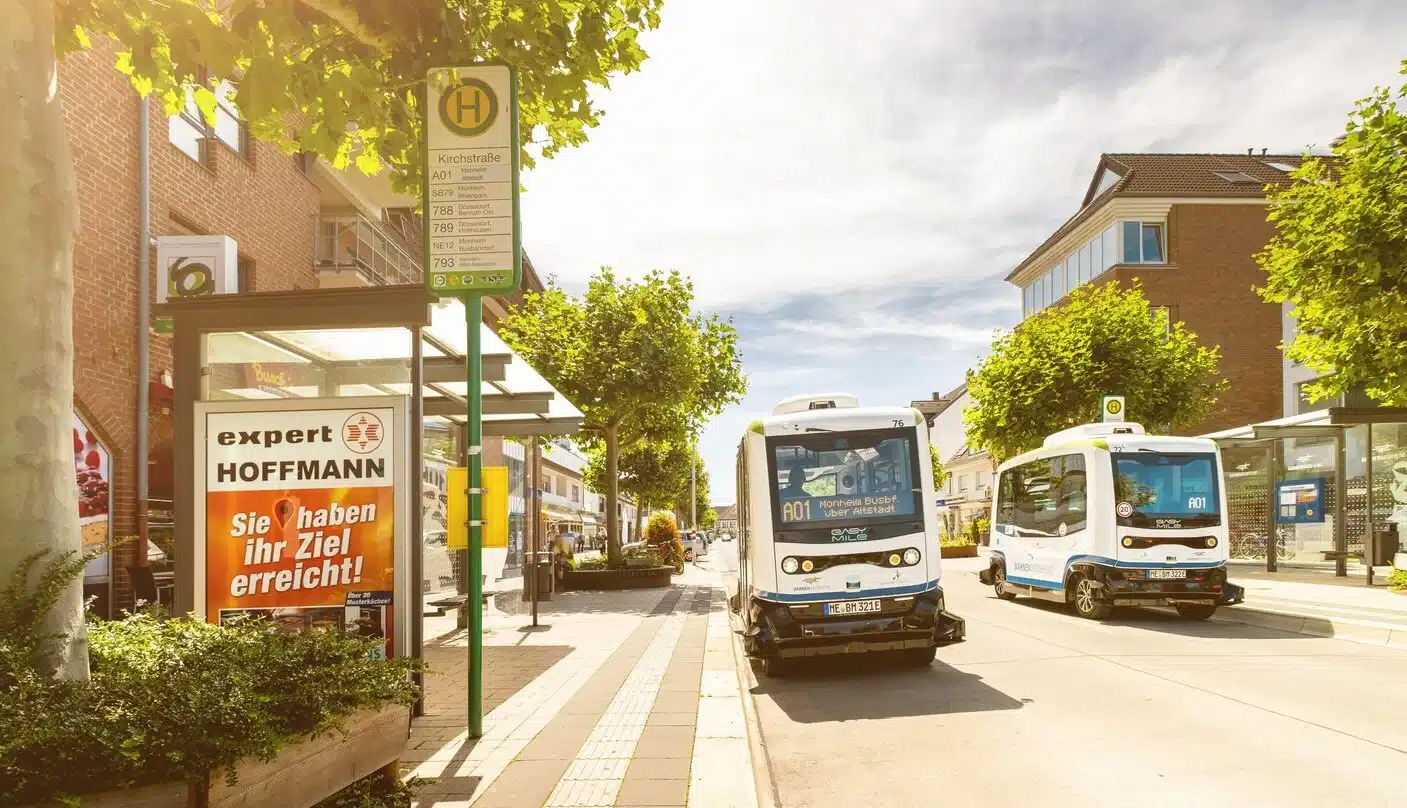
This and other deployments address two critical issues: driver shortages and environmental impact. An aging population and a decline in the number of people willing to become bus drivers are creating significant challenges for public transport authorities. Autonomous shuttles offer a potential solution, alleviating the strain on human drivers and ensuring reliable service. Additionally, electric autonomous shuttles contribute to a reduction in greenhouse gas emissions, aligning with global sustainability goals.
While gaining traction, rollouts have been more modest in this space, but so have investments. According to Crunchbase, investments in EasyMile to date are €77.1 million.
Autonomous Trucking: Business Case Driven
The trucking industry is embracing AVs across various segments, aiming to improve efficiency and safety and address driver shortages. Companies targeting this use case often engage with supply chain partners and customers, ensuring a sound business model from the outset.
Long-Haul Autonomous Trucking:
Kodiak, Aurora, TuSimple, and Einride are developing autonomous solutions for long-haul trucking on highways.
Kodiak has signed several commercial agreements and is leveraging partnerships with logistics giants to create a comprehensive autonomous shipping ecosystem, potentially revolutionizing the way goods are transported.
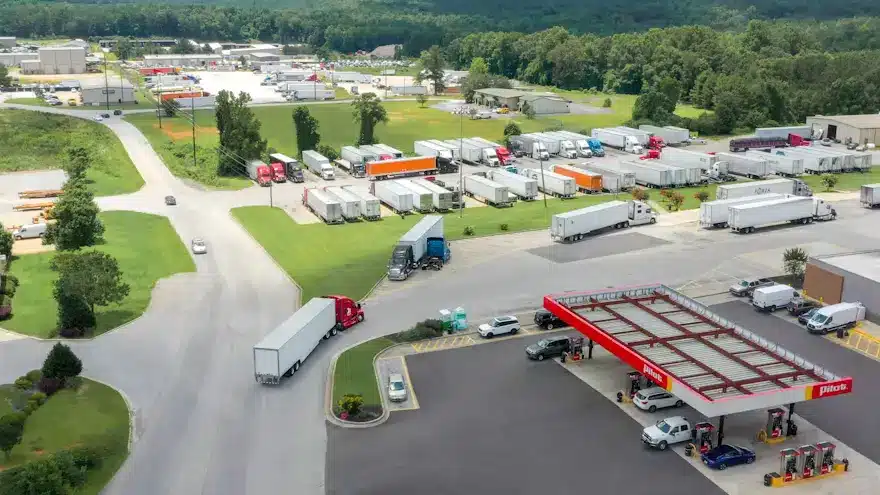
Aurora has partnered with Uber Freight to integrate its self-driving trucks into Uber’s logistics network, while TuSimple has secured partnerships with leading shipping companies like UPS. Einride focuses on developing and deploying electric and autonomous trucks, aiming to create a sustainable and efficient transportation ecosystem.
With the exclusion of Aurora, investment in autonomous trucking-focused companies is significantly lower than in robotaxi companies. Here are a few examples according to Crunchbase:
- Kodiak Robotics – $319.9 million
- TuSimple $648.1 million
- Einride $652.3 million
- Aurora $3.7 billion
Middle Mile:
Gatik focuses on middle-mile logistics – short-haul, business-to-business delivery routes. It has a fleet of autonomous vehicles designed to operate on fixed routes, such as those between distribution centers, stores, and warehouses. By specializing in this niche market, Gatik has been able to rapidly deploy its fleet of trucks that operate without a safety driver and partner with major retailers and logistics companies such as Walmart Inc., Loblaw Cos., Pitney Bowes, Georgia-Pacific, KBX, Kroger, Tyson Foods.

To date, Gatik raised $152.9 million, of which $30 million was announced in May 2024 as part of a partnership with Isuzu Motors.
Last-Mile Delivery: A Hotbed of Activity

From the outset of driverless vehicles, last-mile delivery has attracted a flurry of activity. Two vehicle form factors serve this use case: dedicated low-speed, small vehicles traveling on the road, such as Nuro, and sidewalk delivery robots, such as Coco.
Sidewalk delivery robots have been demonstrating constant progress. While not all of the many companies established will survive, leaders are demonstrating growth and even profitability.
Coco delivery robots focus on local food delivery, “Food delivered faster, hotter and fresher. Everytime”. Operating in urban centers, the robots are remotely operated with the support of semi-autonomous features. The company raised $41.5 million to date (including a hefty round led by one Sam Altman). CoCo operates hundreds of robots on the US West Coast.
Serve Robotics successfully raised $40 million through an initial public offering (IPO) in April 2024. This funding fuels their expansion plans – they aim to deploy up to 2,000 robots in multiple US cities by the end of 2025, significantly increasing their current fleet of 100 robots operating in Los Angeles.
Delivery Robot Pioneer Starship Technologies has made 6 million deliveries to date, with its robots traveling 11 million miles. The company claims to be profitable and has recently raised additional funds targeting expansion, bringing total investment to date to $287.7 million.
Nuro underwent significant layoffs and restructuring in May 2023, and is focused on technology.
Geofenced Areas and Off-Road: Where AVs Shine
While public roads present a complex and unpredictable environment, geofenced areas offer a controlled space for AVs to thrive.
Agriculture: Precision and Efficiency
Autonomous agricultural equipment is gaining traction, with companies like John Deere and Autonomous Tractor Corporation deploying driverless tractors and harvesters. These solutions improve precision agriculture by optimizing seed planting, fertilizer application, and harvesting processes. For instance, John Deere’s autonomous tractor, the 8R, utilizes GPS technology and real-time data to ensure precise maneuvers, reducing waste and maximizing crop yields.
Bluewhite takes a different approach, offering Robot-as-a-Service, retrofitting existing tractors with hardware and software that transform them into autonomous agricultural machines. The company raised $39 million at the beginning of 2024, bringing total investments to $87.5 million, and has recently signed a strategic partnership with CNH. The partnership includes retrofit kits for CNH’s New Holland tractor brand, as well as factory-integrated solutions down the line.
Ports and Terminals: Streamlining Container Movement
Container terminals face increasing congestion and, at times, severe throughput fluctuations that impede their operational efficiency. The surge in global trade, exacerbated by the pandemic-driven shift in consumer behavior towards e-commerce and rapidly evolving geopolitical hotspots, has led to unprecedented cargo volumes passing through ports, with traffic patterns greatly changing with little to no early warning. These patterns, combined with severe driver shortages, result in delays, increased dwell times for ships, and logistical bottlenecks that ripple through the supply chain, causing delays in the delivery of goods to consumers and businesses.
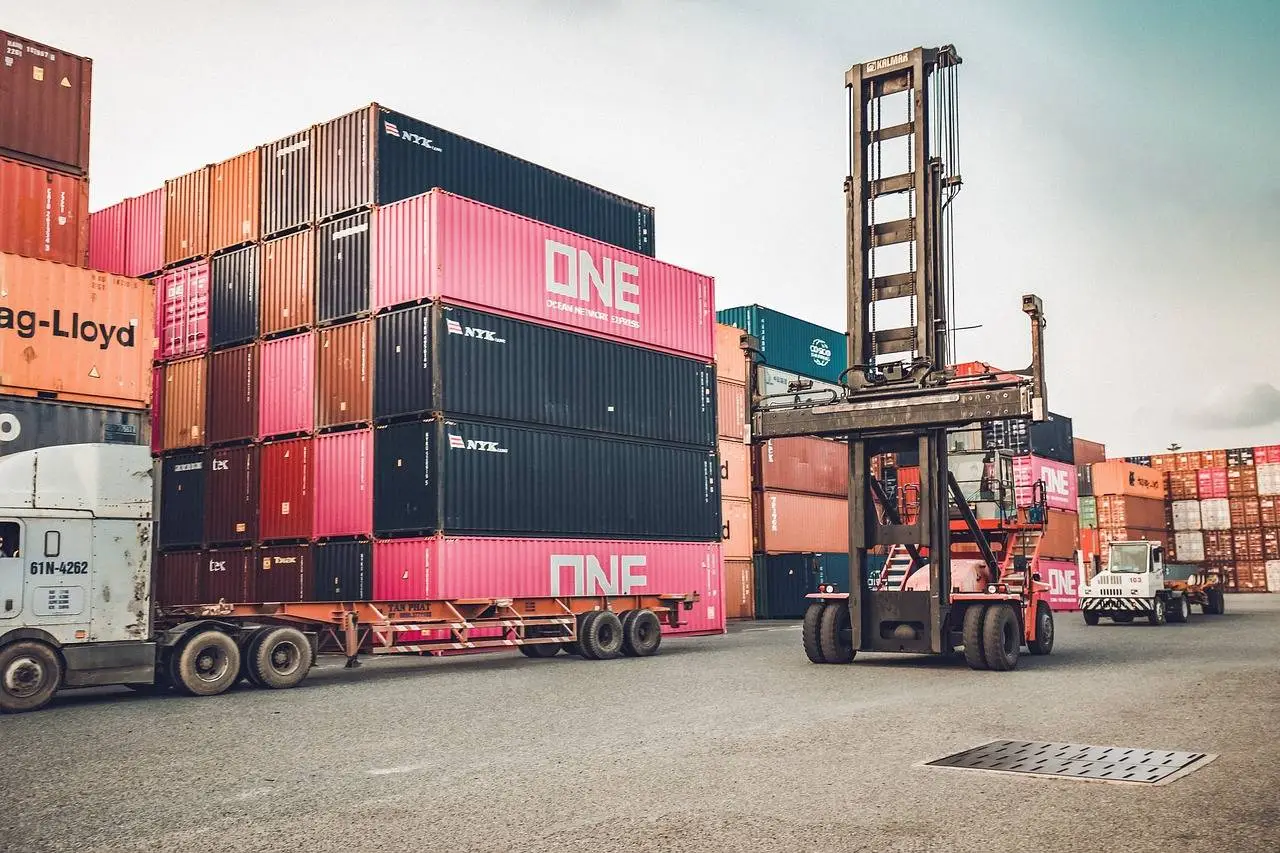
Autonomous container yard trucks are deployed to overcome driver shortages, relieve congestion, and improve port efficiency. Examples include:
- Kramer Group, StreetDrone, and Terberg are collaborating to deploy six autonomous yard trucks across the Port of Rotterdam, Netherlands. This project aims to improve safety and efficiency in container handling.
- Hamburger Hafen und Logistik AG (HHLA) is testing autonomous trucks in its container terminals, focusing on improving logistics operations.
Construction Sites: Transforming the Landscape
The construction industry is witnessing the rise of autonomous excavators, bulldozers, and dump trucks from companies like Caterpillar and Komatsu. Caterpillar’s autonomous dozer, the D9T, utilizes advanced sensors and software to navigate construction sites efficiently, reducing the risk of accidents and enabling round-the-clock operation, especially in hazardous environments.
Mining: A Demanding Yet Rewarding Environment
Mining companies are adopting autonomous solutions for hauling and loading materials in harsh environments. Komatsu’s Autonomous Haulage System (AHS) utilizes a network of self-driving Komatsu dump trucks that operate in open-pit mines, improving safety and productivity by reducing the need for human operators in potentially dangerous conditions. Another use case in the mining industry is resource extraction. Sandvik’s AutoMine system features self-driving haul trucks and loaders that operate in underground mines, navigating complex tunnels and potentially hazardous environments. This not only improves efficiency but also significantly reduces the risk for human workers who would otherwise be operating heavy machinery in challenging conditions.
Summary: A Multifaceted Landscape with Shifting Priorities
The use of autonomous vehicles is demonstrably growing, with deployments spanning diverse industries and environments. While public road applications garner significant attention, geofenced areas and off-road settings are witnessing rapid advancements. The complexity of public road navigation, coupled with safety concerns and regulatory hurdles, necessitates a more cautious approach in this domain. Conversely, controlled environments offer a fertile ground for AVs to demonstrate their potential, contributing to increased efficiency, safety, and cost-effectiveness across various sectors.
As technology matures and regulations evolve, the line between public and geofenced AV applications will likely blur, ultimately leading to a more integrated and transformative autonomous future. However, it is important to acknowledge that the path to widespread profitability for AVs, particularly in the realm of robotaxis, might be longer and more challenging than initially anticipated. Other technologies, like teleoperation, might offer more cost-effective solutions for specific applications in the near term, while fully autonomous vehicles continue to navigate the complexities of the real world.
